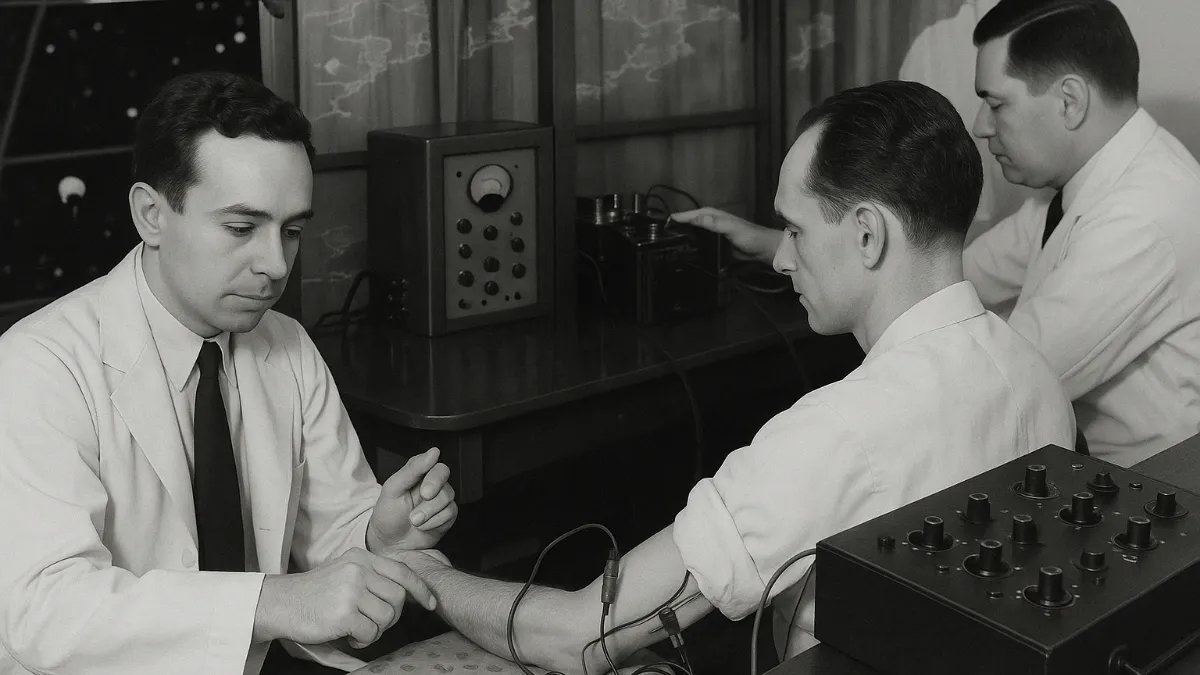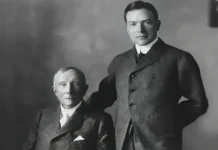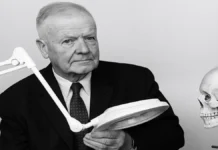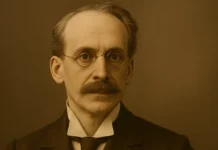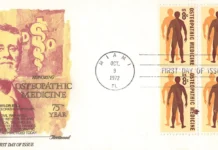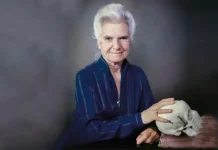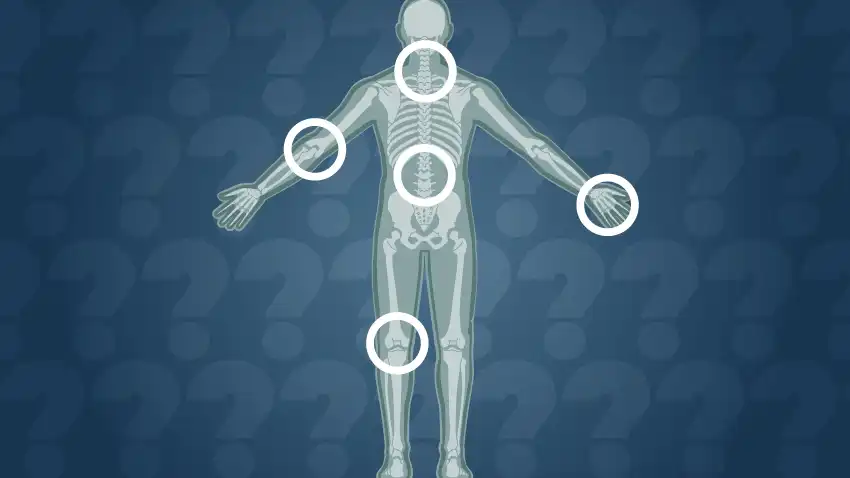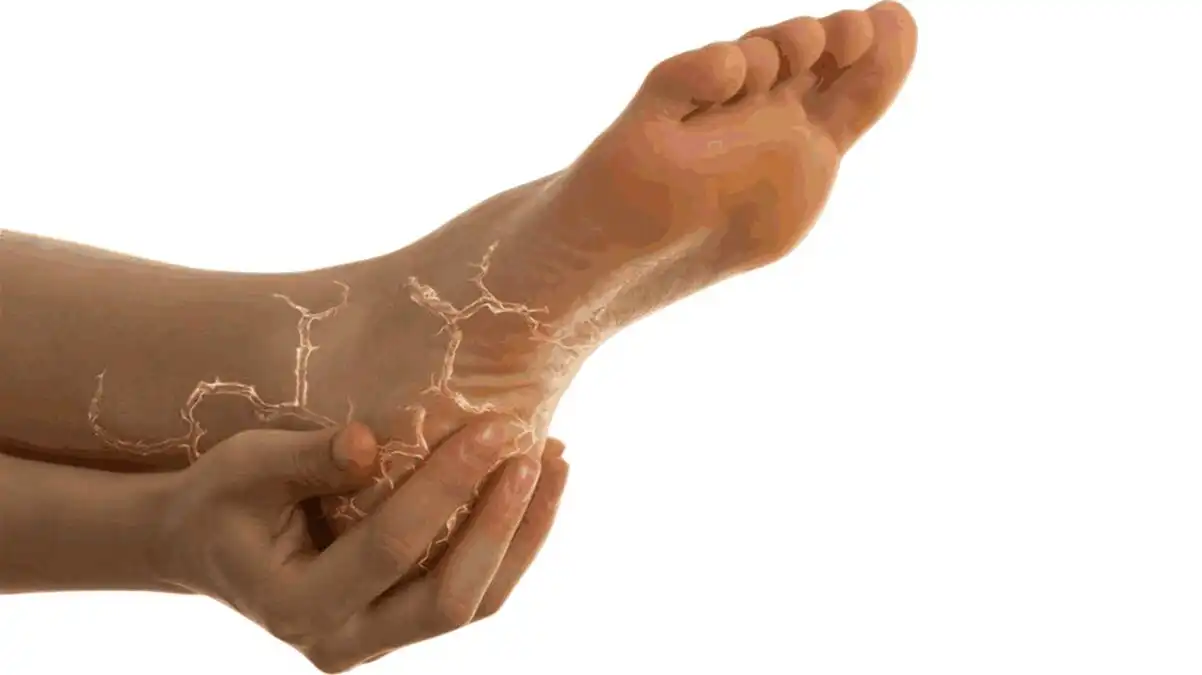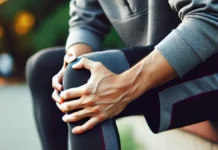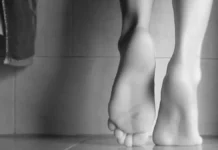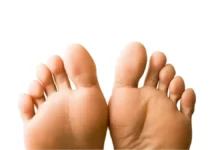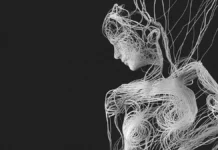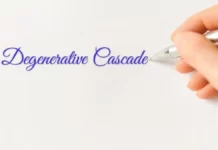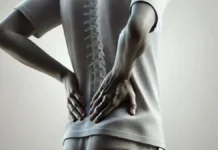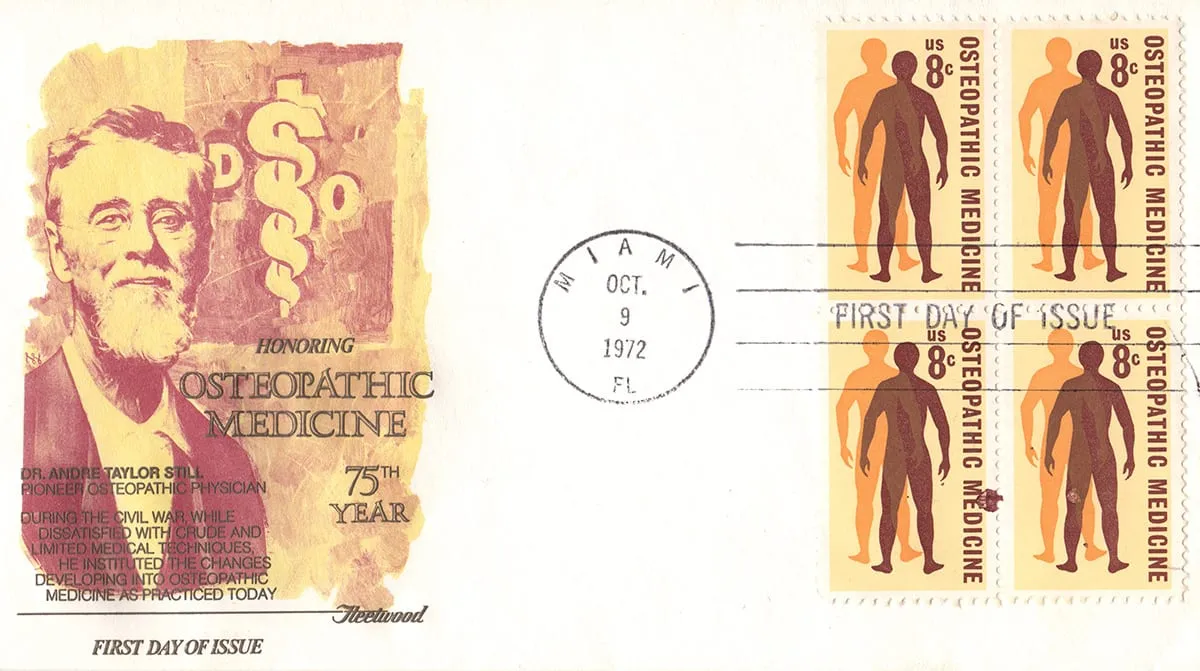Irvin M. Korr (1912–2003): Pioneer of Osteopathic Neurobiology
Irvin M. Korr, born in 1912 and died in 2003, remains a key pioneer of osteopathic neurobiology, having greatly contributed to the rapprochement between osteopathy and conventional medical science. His remarkable career left a lasting legacy, shaping the understanding of the neurophysiological mechanisms underlying the fundamental principles of osteopathy.
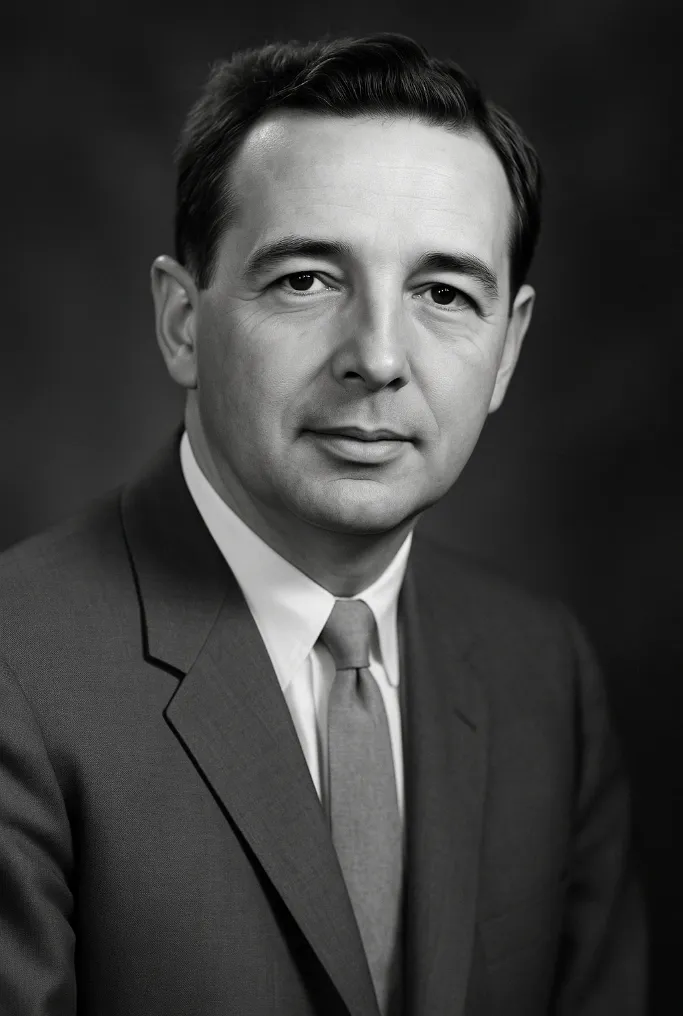
Korr a particulièrement exploré la notion de dysfonction somatique et son influence sur la régulation autonome. Il a démontré comment des déséquilibres mécaniques et neurologiques pouvaient affecter l’homéostasie, offrant ainsi des bases scientifiques solides aux approches ostéopathiques. Sa théorie du « facilitated segment » (segment facilitateur) a marqué un tournant, établissant un lien entre la colonne vertébrale et les fonctions viscérales via le système nerveux.
Au-delà de ses découvertes scientifiques, Irvin Korr était également un éducateur passionné, dont l’enseignement a influencé des générations d’ostéopathes. Son engagement envers la recherche et l’éducation a permis de renforcer la crédibilité scientifique de l’ostéopathie et de la faire reconnaître comme une discipline médicale intégrée. Aujourd’hui encore, ses contributions continuent d’inspirer les praticiens, confirmant son statut de pionnier incontournable dans le domaine.
Korr has dedicated much of his professional life to exploring the connections between osteopathic manipulative treatment (OMT) and the nervous system. One of his major contributions lies in his in-depth research on “facilitated segments”. According to his work, certain segments of the spine can become hypersensitive, exhibiting impaired neuronal function. These facilitated segments are considered key points where somatic dysfunctions can emerge, thus providing crucial insight into the connection between physical dysfunctions and the nervous system.
On the neurophysiological level, Korr highlighted the importance of sensory afferents for maintaining optimal function of the nervous system. He pointed out that somatic dysfunctions can disrupt normal nerve impulses, leading to alterations in communication between different parts of the central nervous system. This understanding laid the foundation for a specific approach to OMT aimed at restoring disrupted neurophysiological balance.
Korr also explored neuronal plasticity, demonstrating how OMT can positively influence the nervous system’s ability to adapt to external stimuli. According to his research, osteopathy promotes the regeneration and repair of altered neuronal pathways, thus opening new perspectives on the therapeutic potential of this discipline.
In summary, Irvin M. Korr played an essential role in the development of osteopathic neurobiology, expanding our understanding of the interactions between OMT and the nervous system. His influence continues in modern osteopathic practice, encouraging an evidence-based approach and strengthening collaboration between osteopathy and the medical community. His innovative research continues to inspire health professionals to expand their knowledge and promote the constant evolution of osteopathy.
Early Life and Education of Irvin M. Korr
Irvin M. Korr was born in 1912, a time when the world of medicine was undergoing significant transformation with advances in science and technology. Raised in a modest household, Korr’s early life was shaped by curiosity, intellectual rigor, and a desire to understand the human body’s complexities. His formative years were marked by a strong inclination toward science, fueled by his keen observational skills and an inquisitive mind. These traits would lay the foundation for his later groundbreaking contributions to osteopathy and neurophysiology.
Korr pursued his undergraduate studies at the University of Pittsburgh, where he initially focused on biology and biochemistry. His interest in the nervous system developed early during these years, as he became fascinated with the intricate mechanisms by which the brain and body communicate. He excelled in his studies, earning recognition for his analytical abilities and innovative thinking. This academic foundation was critical in shaping his approach to the interdisciplinary nature of medicine and science.
Korr’s journey into osteopathy began somewhat serendipitously. After completing his undergraduate studies, he initially considered a career in conventional medicine. However, an encounter with osteopathic physicians during his graduate research changed his perspective. He was intrigued by the holistic philosophy of osteopathy, particularly its emphasis on the interconnectivity of the body’s systems and the role of the musculoskeletal system in health and disease. This approach aligned with his growing interest in the nervous system’s role in maintaining balance and homeostasis within the body.
To deepen his understanding, Korr pursued advanced studies, eventually earning a PhD in physiology. His doctoral research focused on the interplay between the nervous system and musculoskeletal function, a subject that would define his career. During this period, he became increasingly involved with osteopathic institutions, where he found a unique platform to explore his ideas and bridge the gap between osteopathic principles and mainstream medical science.
What set Korr apart during his early career was his interdisciplinary approach. He combined insights from physiology, neurobiology, and biomechanics to develop a scientific framework for understanding osteopathy’s mechanisms. His early work on facilitated segments—the hypersensitive spinal regions that form the basis of somatic dysfunction—emerged from his keen interest in the nervous system’s adaptability and its role in health and disease.
Korr’s early education and formative experiences not only prepared him for a distinguished career but also provided him with the tools to challenge conventional paradigms. His ability to merge scientific rigor with osteopathic philosophy laid the groundwork for his lifelong mission: to bring osteopathy into the fold of evidence-based medicine while preserving its holistic ethos. This unique blend of passion and intellect set the stage for his pioneering contributions to the field.
Key Milestones in Irvin M. Korr’s Career
Irvin M. Korr’s career was marked by a series of pivotal milestones that not only defined his personal achievements but also revolutionized the field of osteopathy. His pioneering work bridged the gap between osteopathic philosophy and the scientific rigor of neurophysiology, creating a legacy that continues to shape the discipline. Below is a timeline and summary of his major accomplishments, highlighting his research, publications, and collaborations.
1. Early Research on Neurophysiology (1940s-1950s)
Korr began his career with a strong focus on neurophysiology, influenced by his academic background in biology and physiology. During this period, he explored the autonomic nervous system’s role in health and disease, laying the groundwork for his later contributions to osteopathic medicine.
- His initial research emphasized the relationship between the nervous system and musculoskeletal function, drawing attention to the interplay between structural and functional aspects of the human body.
- This early work established his reputation as a meticulous and innovative researcher, attracting the attention of prominent osteopathic institutions.
2. Introduction of the “Facilitated Segment” Concept (1950s)
One of Korr’s most groundbreaking contributions came in the 1950s with his theory of the “facilitated segment.”
- He proposed that certain spinal segments could become hypersensitive due to trauma, stress, or dysfunction, perpetuating pain and physiological imbalances.
- This concept provided a scientific explanation for somatic dysfunction, a cornerstone of osteopathic diagnosis and treatment, and offered a physiological framework for understanding how manipulative treatments could restore health.
- Korr’s theory was widely published in osteopathic journals, cementing his status as a leading thinker in the field.
3. Collaboration with Osteopathic Institutions (1950s-1970s)
Korr’s work flourished through collaborations with osteopathic institutions such as Kirksville College of Osteopathic Medicine and the American Osteopathic Association (AOA).
- He served as a faculty member at Kirksville, where he trained and mentored countless osteopaths, emphasizing the importance of scientific inquiry in clinical practice.
- His association with the AOA allowed him to present his research to a broader audience, fostering a deeper integration of osteopathy into the medical community.
- Korr also worked closely with researchers in the emerging fields of biomechanics and neuroscience, further enhancing his interdisciplinary approach.
4. Publications and Academic Achievements (1960s-1980s)
Throughout his career, Korr published extensively in both osteopathic and mainstream medical journals, bridging the gap between the two disciplines.
- Key publications included The Neurobiologic Mechanisms in Manipulative Therapy (1975), which detailed the physiological effects of osteopathic manipulative treatment (OMT).
- His work was instrumental in integrating osteopathic principles into evidence-based medicine, earning him accolades from the osteopathic community and beyond.
5. Exploration of Neuronal Plasticity and Repair (1970s-1980s)
In his later career, Korr expanded his research into neuronal plasticity, exploring how OMT could influence the nervous system’s ability to adapt and regenerate.
- He demonstrated that manipulative treatments could promote the repair of impaired neural pathways, opening new avenues for understanding the therapeutic potential of osteopathy.
- His findings had significant implications for treating neurological and musculoskeletal disorders, further solidifying the scientific foundation of osteopathy.
6. Mentorship and Advocacy for Osteopathic Science (1980s-2003)
Korr was not only a researcher but also a passionate educator and advocate for osteopathic science.
- He mentored generations of osteopaths, inspiring them to pursue research and integrate evidence-based practices into their work.
- As a vocal advocate for osteopathy, he championed its legitimacy within the broader medical community, emphasizing its holistic approach to healthcare.
Legacy and Continuing Impact
Irvin M. Korr’s career was defined by his unwavering commitment to advancing osteopathy through rigorous scientific exploration. His work on facilitated segments, somatic dysfunction, and neuronal plasticity laid the foundation for modern osteopathic practice.
- Korr’s legacy lives on in the countless osteopaths he mentored and in the enduring relevance of his research. His ability to synthesize osteopathic philosophy with cutting-edge science remains a source of inspiration for practitioners and researchers alike.
Broader Context: Osteopathy Before Korr
To fully appreciate Irvin M. Korr’s revolutionary contributions to osteopathy, it is essential to understand the state of the field before his work. Osteopathy, as a discipline, was still grappling with scientific validation and struggling to gain recognition within the broader medical community. Founded by Andrew Taylor Still in 1874, osteopathy was built on the principle that the body’s structure and function are interconnected, and that manipulation of the musculoskeletal system could restore health by addressing dysfunctions. While this holistic philosophy was groundbreaking for its time, it faced significant challenges as medicine evolved into the 20th century.
The Foundations of Osteopathy
Osteopathy began as a response to the shortcomings of 19th-century medicine, which often relied on harmful and ineffective treatments such as bloodletting and toxic medications. Andrew Taylor Still emphasized the body’s self-healing capacity, promoting manual therapy as a means of restoring structural integrity and optimizing physiological function. Early osteopaths focused on palpation and manipulation to identify and correct “lesions” in the musculoskeletal system, believing these to be the root of disease.
While osteopathy gained a dedicated following, it lacked the scientific tools to explain its mechanisms of action. The early 20th century saw osteopathy grow as a distinct medical discipline in the United States, with the establishment of osteopathic schools and professional organizations. However, its reliance on philosophical principles rather than scientific evidence drew skepticism from mainstream medicine, which increasingly emphasized laboratory research and pharmaceutical interventions.
Challenges in Gaining Acceptance
By the mid-20th century, osteopathy faced significant hurdles in its quest for legitimacy. The medical establishment viewed it as an alternative or complementary practice rather than a fully integrated discipline. This perception was partly due to the limited scientific research supporting osteopathic principles, as well as the dominance of allopathic medicine (conventional medicine) in education, practice, and policy.
Osteopathic manipulative treatment (OMT) was often dismissed as anecdotal, with critics arguing that its benefits were not well-documented or understood. Osteopathy’s holistic approach, while appealing to patients, was at odds with the reductionist framework of conventional medicine, which sought to isolate specific causes of disease and address them through targeted interventions.
Despite these challenges, osteopathy persisted, with practitioners continuing to demonstrate the clinical efficacy of OMT in treating a wide range of conditions. However, the lack of a robust scientific framework to explain how manipulation influenced physiological and neurological processes limited its acceptance in academic and clinical settings.
The Need for a Scientific Revolution
By the time Irvin M. Korr entered the field in the mid-20th century, osteopathy was at a crossroads. The discipline had established itself as a distinct profession, with its own schools, licensing boards, and clinical practices. Yet, it was still searching for scientific validation to bolster its credibility and secure its place within the broader medical community.
The integration of osteopathy with emerging fields like neurophysiology and biomechanics presented a promising avenue for advancement. Researchers and practitioners recognized the potential for a deeper understanding of how manual therapies could influence the nervous system, homeostasis, and overall health. However, the field needed a visionary who could bridge the gap between osteopathic philosophy and the scientific rigor demanded by modern medicine.
Osteopathy’s Perception Before Korr
Before Korr’s contributions, osteopathy was often viewed as a niche or fringe practice. While it had made strides in gaining legal recognition and establishing educational standards, it struggled to shake off its image as unscientific. The lack of empirical evidence supporting its claims made it difficult for osteopathy to gain the respect of mainstream medical institutions. Practitioners were often excluded from hospitals and research opportunities, further isolating the field.
Korr’s work marked a turning point by introducing a neurophysiological framework that explained how osteopathic manipulative treatments could influence the nervous system and restore balance in the body. His research demonstrated that osteopathy was not only effective but also grounded in measurable, scientifically valid principles. By bridging osteopathy with neuroscience, Korr helped elevate the discipline from philosophical speculation to a legitimate medical science.
Facilitated Segments and Somatic Dysfunction
Irvin M. Korr (1912–2003): Pioneer of Osteopathic Neurobiology
Irvin M. Korr, an eminent figure in neurobiology, wrote his name in the history of osteopathy by devoting his career to exploring the neurophysiological mechanisms that underlie the fundamental principles of this discipline. Born in 1912, Korr was a visionary who contributed significantly to building bridges between osteopathy and conventional medical science, lighting the way toward a deeper understanding of how osteopathic manipulative treatment (OMT) interacts with the nervous system.
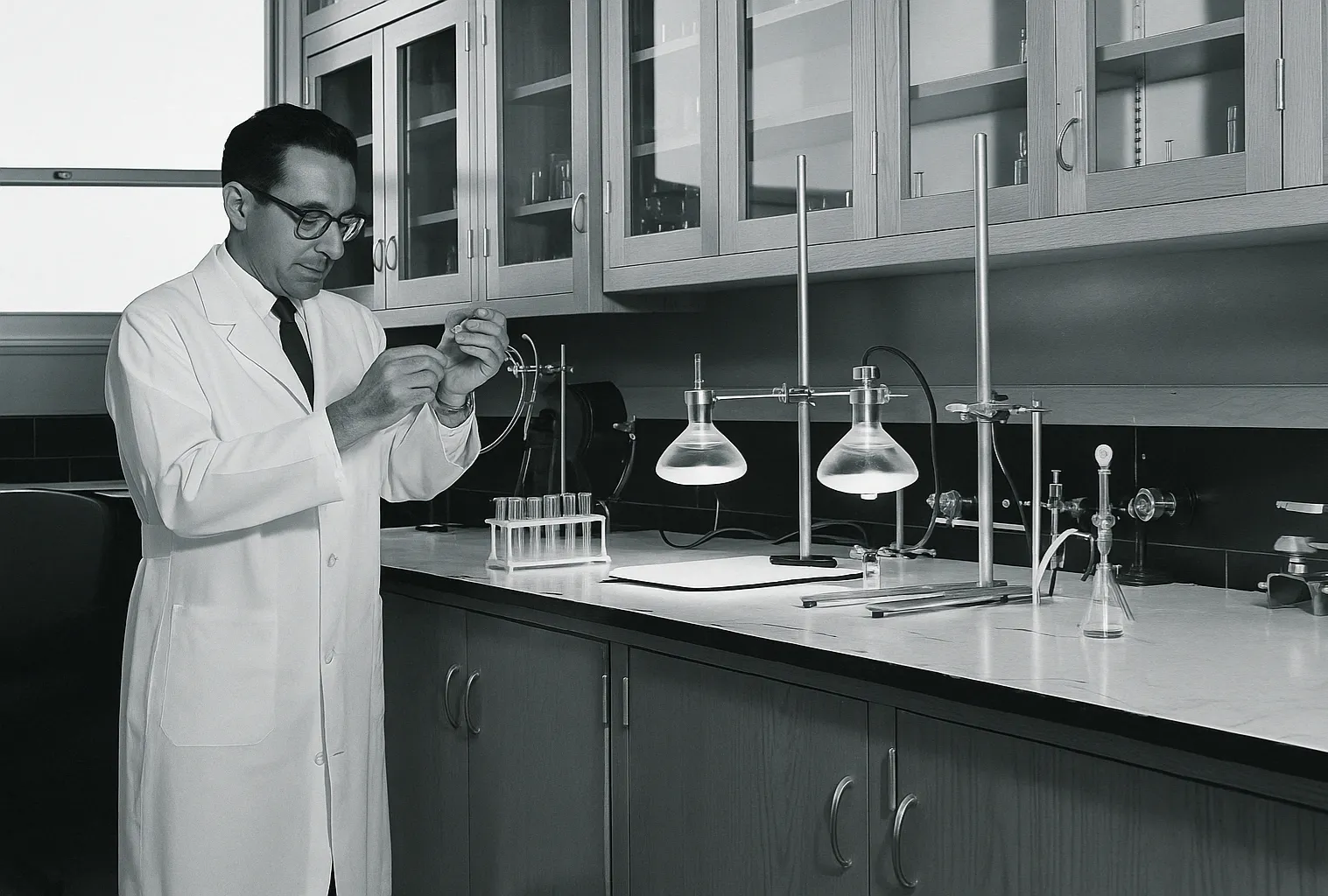
Dr. Korr’s research introduced revolutionary concepts, such as the facilitated segment, which explained how neural pathways could become hypersensitive due to dysfunction, perpetuating pain and physiological disturbances. By bridging the gap between osteopathic principles and modern neuroscience, his work provided a scientific framework that continues to guide osteopathic practitioners in their approach to diagnosis and treatment.This image reflects Dr. Korr’s unwavering commitment to advancing the field of osteopathy through rigorous scientific inquiry. His legacy endures not only in the wealth of knowledge he contributed but also in the generations of osteopathic physicians who draw inspiration from his insights, striving to integrate holistic care with scientific rigor. For decades, Irvin M. Korr, PhD, conducted pioneering basic science research exploring the relationships between somatic dysfunction and the nervous system. (Photo from the AOA photo archive)
One of Korr’s major contributions was his groundbreaking research on “facilitated segments.” According to his work, certain segments of the spine can become hypersensitive and exhibit impaired neuronal function, resulting from various factors such as physical trauma or psychological stress. These facilitated segments, once identified, are considered as nerve centers where somatic dysfunctions can emerge, thus opening new perspectives for osteopathic practitioners.
At the neurophysiological level, Korr emphasized the crucial importance of sensory afferents in maintaining optimal function of the nervous system. His work has highlighted how somatic dysfunctions can disrupt normal nerve impulses, leading to alterations in communication between different parts of the central nervous system. This in-depth understanding has laid the foundation for a more targeted approach to OMT, aimed at restoring disrupted neurophysiological balance.
Korr also explored neuronal plasticity, highlighting the ability of the nervous system to adapt and change in response to external stimuli. According to him, OMT could positively influence this plasticity, promoting the regeneration and repair of altered neuronal pathways.
In conclusion, Irvin M. Korr left a lasting legacy in the field of osteopathy by detailing the complex neurophysiological mechanisms underlying the effectiveness of OMT. His innovative research opened new perspectives, propelling osteopathy into a more scientific sphere and strengthening the legitimacy of this respected medical discipline. His influence continues to guide modern osteopathic practice, inspiring practitioners to deepen their understanding of the subtle interactions between the OMT and the nervous system.
Neurophysiological Balance and Osteopathy
Irvin M. Korr, with his groundbreaking research in osteopathic neurobiology, has highlighted the critical importance of sensory afferents in maintaining optimal nervous system function. His work has opened new perspectives on how osteopathy works by restoring disrupted neurophysiological balance, thus marking a significant advance in the understanding of the mechanisms underlying osteopathic principles.
According to Korr, sensory afferents, which are the information coming from sensory receptors in the body, play a key role in maintaining neurophysiological homeostasis. When there are disruptions in these afferents, whether from physical trauma or other stresses, it can lead to dysfunctions of the nervous system. These disturbances, when not corrected, can give rise to inappropriate responses of the nervous system, thus contributing to the development of various neurological or musculoskeletal disorders.
Indicating Timestamps from the Video
Introduction of Dr. Irvin M. Korr: 00:00
Early Academic Achievements and Degrees: 04:14
First Job and Introduction to Medical Physiology: 04:46
World War II Research Contributions: 05:49
Aviation Medicine and Challenges in High Altitude Flight: 06:20
Transition Back to Academic Life: 08:55Introduction to Osteopathy: 09:25
Collaborative Research on Reflex Thresholds: 14:40
First Major Paper on Neural Basis of Osteopathic Lesion: 16:20
NIH Grant for Kirksville College: 19:26
Establishment of a Clinical Research Center: 19:57
Moving to Michigan State University: 22:34
Biomechanics and Manipulative Medicine: 23:37
Transition to Texas and New Initiatives: 24:40
Transcript of video
[00:00:00]
“This is Ray Stokes in the special collections section of the TC library on Tuesday, the 15th of November 1988. Today I have a very special guest, one that I’m very delighted to recognize and to say that in all probability, this distinguished person has done more to improve the concept and growth of osteopathic medicine than any person that I think is living today. This person I refer to is Dr. Irvin M. Korr. Dr. Korr, for example, has another distinction because, believe it or not, Dr. Korr is not a D.O., yet he has done more to promote osteopathy than any person that I can think of.”
[00:00:31]
“So, Dr. Korr, it’s my pleasure to visit with you here today and to kind of, uh, first get a little idea. Of course, your name is Irvin M., but you go by a nickname by the name of Kim, and I’m rather anxious to learn what that—I’ve called you Kim now for the 10 years that I’ve known you, but I’d like to know what the Kim—where you got the Kim? How’d they hang that onto you?”
[00:01:02]
“It comes from my initials, as it appears in alphabetical listings—Korr, I.M. Korr, I.M.—and, uh, that’s right. I was never very comfortable with my name Irvin, having been raised in Philadelphia, where it was pronounced oddly when it was shortened.”
[00:01:30]
“Many years later, when I was at New York University, a friend of mine, a colleague, said, ‘I.W. Kim—it seems to fit you very well,’ and I’ve been comfortable with it ever since for more than 50 years.”
[00:01:50]
“Tell you what I’d like to do, if I could. I’d like to refer to an article that was written about you, uh, by a very good friend of ours, Judy Alter, who is a Fort Worth writer and author. She wrote a very fine article about you back when you first joined TCOM back in 1978 or ’79. I’d like to read what she had to say—at least an excerpt of the first two paragraphs in this particular article.”
[00:02:20]
“Irvin M. Korr, Ph.D., began his association with osteopathic medicine and scientific research, and through a long and distinguished career, he has become known as a major contributor to the modern scientific understanding of the profession’s distinctive contribution to the field of medicine.”
[00:02:48]
“The impact of his work has been felt in basic research areas and in clinical medicine. But the importance of Dr. Korr’s career and his writings goes beyond scientific research to embrace both teaching and philosophy. Both in the classroom and in areas such as curriculum planning, he has become renowned for his knowledge and insight into the special problems of osteopathic education.”
[00:02:48]
“The impact of his work has been felt in basic research areas and in clinical medicine. But the importance of Dr. Korr’s career and his writings goes beyond scientific research to embrace both teaching and philosophy. Both in the classroom and in areas such as curriculum planning, he has become renowned for his knowledge and insight into the special problems of osteopathic education.”
[00:03:10]
“Further, he has established himself in writing and at the lectern as one of the most articulate exponents of the profession. The philosopher who brings to the osteopathic concept a blend of understanding, wisdom, and enthusiasm for his subject.”
[00:03:35]
“Now, in essence, that pretty well tells the story of the accomplishments that Dr. Korr—Kim, as I’m going to say in the future—has performed. What I’d like to do, Dr. Kim, is to kind of divide your life into at least four parts. The beginning, of course—I understand you got your B.A. degree at Pittsburgh—excuse me, the University of Pennsylvania. It’s in the wrong city, University of Pennsylvania.”
[00:04:05]
“And then you got both your Bachelor’s and Master’s degree there, and you got your Princeton at Princeton—you got your doctorate. What year was that?”
“1935.”
“1935. Would you kind of give us a little bit of an idea what, uh, your first introduction after you got your degree in physiology—what was your first job that you had?”
[00:04:35]
“Well, after I received my degree, I took a post-doctoral fellowship at Princeton University, and in the fall of 1936, I was appointed to the faculty of the New York University School of Medicine in the Department of Physiology.”
[00:04:55]
“And that was your first introduction to medicine per se?”
“Apart from being a patient or my family being a patient, right.”
“Yes, my first experience in teaching medical physiology. My training at Princeton was in cellular physiology—more fundamental than human physiology. So, I acquired my knowledge in human physiology while teaching it.”
[00:05:20]
“I see. Then you went from there, after teaching at New York University, I understand during World War II, you worked for the Department of War. Would you tell me something about your assignment there?”
“Yes, in 1942, having joined the faculty at New York University in ’36, I took a leave of absence to engage in research in aviation medicine in New York City, on Welfare Island. Our job was to prepare pilots, develop techniques that would enable pilots to fly as high as their airplanes could fly. Specifically, we dealt with the pilots of the Thunderbolt, the P-47, which was one of our best fighter planes at the time.”
[00:06:00]
“The P-47 had a ceiling well above 50,000 feet, but the human ceiling didn’t begin to approach 50,000 feet. This was because the cabins were not pressurized in those days, and the atmospheric pressure at those altitudes was so small that, even while breathing pure oxygen, the blood simply did not pick up enough oxygen to maintain consciousness and perhaps even life for more than a few minutes. So, that was our first project, and we did produce some techniques that were very helpful.”
[00:06:40]
“Later, I was transferred to Fort Monmouth, New Jersey, where I undertook climatic research for what was then called the Signal Corps. It no longer exists as a separate body, but it dealt with communications during warfare. The work there concerned preparing enlisted men to serve in extreme climates—in the Arctic, jungles, deserts, and tropical areas. We dealt with the physiological adjustments necessary for soldiers in those conditions.”
[00:07:20]
“During this time, my final project was under the Ordinance Department, where my job, along with my colleagues, was to develop better ways of killing people. As a biologist, this did not make me very happy, but it was my assignment. Specifically, we were studying the ballistic properties of human flesh to develop more effective fragmentation bombs. The project ended in the spring of 1945 when I was released to return to academic life.”
[00:08:00]
“I see. Returning to academic life, tell me then, Kim, how did you become introduced to osteopathy?”
“Purely accidentally. As was the practice in those days, when you were looking for an academic position, you wrote to distinguished people whom you hoped to become acquainted with and sort of announced your availability. I did that to several individuals at fine universities.”
[00:08:30]
“By this time, we had a young son, and my wife and I had decided we would not return to New York City. We wanted to raise him in a different environment. One of the first responses I received, even though I had not addressed the Kirksville College of Osteopathic Medicine, came from Dr. John Stedman Denslow, D.O. He was a professor of osteopathic principles and techniques at the time.”
[00:09:00]
“Dr. Denslow invited me to consider an appointment. At the time, I knew nothing about osteopathy except that it presumably had something to do with bones because of the prefix ‘osteo.’ I wasn’t particularly interested, so I set the letter aside. However, I received a telephone call from a distinguished physiologist I had written to, who had recommended me to Kirksville.”
[00:09:30]
“This physiologist told me he had visited the college, didn’t understand everything he saw there, but was impressed by the integrity and dedication of the people. He convinced me to give it a try for a year, suggesting that I write a report on my experiences for the Rockefeller Foundation. So, in December 1945, I moved to northeast Missouri. What was intended to be a one-year trial turned into a 30-year commitment.”
[00:09:55]
“That one year led to another, and another, and another. As I’ve often said, I found myself in exile in rural Missouri. I had been born and raised in Philadelphia, and my wife in New York City. At first, there was something of a cultural shock, but eventually, we adapted.”
[00:10:15]
“Do you recall, Kim, what your first major undertaking and writing on the subject of osteopathy was called?”
“Yes, it was a research paper written by Dr. Denslow and myself, based on the first research we did together. It dealt with the measurement of reflex thresholds in the human spinal cord as they related to what was then called the osteopathic lesion.”
[00:10:40]
“Dr. Denslow had already developed methods, with the help of Dr. Gerard and others, for the electromyographic study of muscular contractions in the spinal muscles. These studies were connected to areas of what we now call somatic dysfunction. Our first paper appeared in the American Journal of Physiology in 1947 and addressed reflex thresholds in humans.”
[00:11:10]
“That article caused significant interest in the profession, as it provided scientific insights into the osteopathic lesion. Shortly after, I wrote my first paper for the American Journal of the American Osteopathic Association, also in 1947. Quite pretentiously, I titled it ‘The Neural Basis of the Osteopathic Lesion,’ as if it were the definitive statement. Of course, it turned out to be just the beginning and not entirely correct, but it stimulated a great response from the profession.”
[00:11:50]
“That response encouraged me to stay committed to osteopathy. From then on, I made it my practice to write accessible summaries of all my scientific findings and draw clinical implications for practitioners. This kept the profession closely in touch with our progress.”
[00:12:20]
“By 1968, you were named Distinguished Professor of Physiology. That was quite an honor, wasn’t it?”
“Yes, I was the first to be named Distinguished Professor at Kirksville. There were only a few of us in that capacity later on.”
[00:12:40]
“In 1975, what prompted you to leave Kirksville after 30 years?”
“Primarily, it was the unfortunate death of my wife. It felt like the right time to close a very wonderful and exciting chapter of my life and move on to something new.”
[00:13:05]
“Before we move away from your time in Kirksville, I understand there was an experience with the National Institutes of Health (NIH) where you were offered a substantial grant. Can you tell me about that project?”
“Yes, as early as 1947, we received what was likely the first NIH grant for research in osteopathy. Dr. Denslow was the principal investigator for that project. In the 1960s, we proposed the establishment of a clinical research center, which was eventually awarded approximately $1 million.”
[00:13:45]
“However, as we began preparing for the center, I had serious concerns about the adequacy of the clinical standards being applied. When I could not achieve the improvements I sought, I withdrew as co-director of the project, which unfortunately caused the collapse of the grant. It was a painful decision, but I felt it was necessary to maintain my integrity as a scientist.”
[00:14:20]
“In 1975, you transitioned to Michigan State University. How did that come about?”
“Michigan State had recently established its College of Osteopathic Medicine. It was the first osteopathic college to be affiliated with a major university, which made it a very exciting opportunity. I was offered a position as a professor of biomechanics, where I focused on the science and art of manipulative medicine.”
[00:14:50]
“What prompted your move to Texas and TCOM in 1978?”
“After three years in Michigan, I was growing tired of the winters there. Additionally, I received a very attractive offer from Dr. Ralph L. Willard, who was the Dean of TCOM at the time and a former student of mine. He invited me to lead a task force to define the goals of osteopathic medical education. That initiative ultimately convinced me to make the move.”
[00:15:30]
“At TCOM, you played a significant role in establishing the Center for Osteopathic Research and Education (CORE). Can you elaborate on that?”
“CORE was conceived as a way to integrate osteopathic principles across all departments in the college. Instead of having a single department responsible for osteopathic theory and practice, we proposed that every department embrace its osteopathic identity. I was appointed acting director to draft its founding documents and establish its direction.”
[00:16:15]
“You’ve been here at TCOM for 10 years now. What is your current focus?”
“I’m focusing on writing a book about healthy aging. The book initially aimed to explore the secrets to living a healthy old age but has evolved into a broader work on the creation of health throughout life.”
[00:16:50]
“Will you continue in academia?”
“This is my final academic year. After 53 years in medical education, including 44 years in osteopathic medical education, it’s time for me to retire. I’ll continue contributing through writing and lectures, but my formal teaching career will end on August 31.”
[00:17:20]
“You’ve contributed so much to osteopathic medicine. What do you consider one of your most impactful achievements?”
“One significant achievement was the paper ‘The Neural Basis of the Osteopathic Lesion.’ While it was not a definitive statement, it was groundbreaking at the time and stimulated immense interest in the profession. It showed that there was a scientific basis for osteopathic concepts.”
[00:17:50]
“Additionally, my work with Dr. Denslow on electromyographic studies provided a method to measure reflex thresholds and analyze muscle activity in areas affected by osteopathic lesions. This work laid the groundwork for understanding somatic dysfunction, which remains central to osteopathic practice.”
[00:18:20]
“How did the osteopathic profession respond to your work early on?”
“The response was overwhelmingly positive. The profession was eager to see that the principles they believed in had a strong scientific foundation. Practitioners began visiting Kirksville to learn more about our research. That level of engagement encouraged me to continue my work and to remain committed to osteopathy.”
[00:18:50]
“What about your involvement with the NIH? Can you elaborate further on how that impacted the profession?”
“In 1947, the NIH awarded Kirksville its first research grant, thanks to Dr. Denslow’s pioneering efforts. This was significant because it validated osteopathy as a legitimate field of scientific inquiry. Over the years, we were able to secure additional funding for various research initiatives, further solidifying the scientific basis of osteopathic medicine.”
[00:19:30]
“There was also a time when you withdrew from a project that the NIH funded. Can you explain your reasons for that?”
“Yes, that was a difficult decision. While preparing for a clinical research center, I found that the clinical standards being proposed were not up to par. I felt that compromising on these standards would undermine the integrity of the entire project. Although withdrawing caused the project to collapse, it was a necessary step to protect the reputation of the institution and my own scientific integrity.”
[00:20:20]
“Let’s move to your time at Michigan State University. What did you accomplish there?”
“At Michigan State, I was part of a pioneering effort to integrate osteopathic medicine into a major university system. My role focused on biomechanics, which dealt with the mechanics of the musculoskeletal system. This was closely tied to the principles of manipulative medicine and provided a scientific framework for osteopathic manipulation.”
[00:20:50]
“What brought you to Texas and TCOM?”
“In 1978, I was invited by Dr. Ralph Willard, who had been my student in Kirksville. He offered me an opportunity to lead a task force to define the goals of osteopathic medical education. This challenge, combined with the warmer climate, convinced me to make the move.”
[00:21:20]
“What was the focus of the task force?”
“The task force was charged with examining the future of osteopathic medical education. We began by asking, ‘Why are there two distinct schools of medicine in America?’ This led to an exploration of unmet societal healthcare needs and how osteopathic medicine could address those gaps. The result was a set of educational goals that emphasized preventive care and a holistic approach to health.”
[00:21:50]
“How did the establishment of the CORE center tie into this vision?”
“CORE—Center for Osteopathic Research and Education—was an extension of our vision to make osteopathic principles central to all aspects of the college. Instead of isolating osteopathy within a single department, we proposed that every department embrace osteopathic philosophy and practice. As acting director, I helped draft its founding documents and guide its early development.”
[00:22:30]
“What are you working on now as you approach retirement?”
“I’m writing a book on healthy aging. Initially, it was going to focus solely on aging, but I realized that the key to healthy aging is living a healthful life. The book has evolved into a broader exploration of how to create and sustain health throughout life. I hope it will inspire others to take a proactive approach to their well-being.”
[00:23:10]
“Do you plan to stay active in the profession after retirement?”
“Yes, I plan to continue writing and speaking. I’m still in demand as a lecturer, and I’ve been invited to speak at several professional conferences in the coming years. Although my academic career will officially end, I intend to remain engaged with the osteopathic community.”
[00:23:50]
“Looking back on your career, how would you define osteopathic medicine?”
“I’ve often declined to directly compare osteopathy to allopathic medicine because it puts osteopathy on the defensive. Instead, I prefer to explain osteopathy’s unique philosophy and approach. At its core, osteopathy views the body as a unit, emphasizes the musculoskeletal system’s role in health, and relies on the body’s inherent healing powers. This philosophy sets it apart and makes it an essential part of modern healthcare.”
[00:24:20]
“Dr. Korr, your approach to explaining osteopathic medicine is compelling. Can you elaborate on how the philosophy influences the practice?”
“Certainly. The philosophy of osteopathy is rooted in the belief that the body is a unit, and every part influences the whole. For example, the musculoskeletal system, being the most massive and interactive system, plays a crucial role in overall health. Dysfunction in this system can impact circulation, nerve function, and organ health. By addressing these dysfunctions, osteopathic medicine enhances the body’s natural healing capabilities.”
[00:24:55]
“It’s also about prevention. The healthier a person is, the less likely they are to develop chronic diseases. This proactive approach differentiates osteopathy from other medical philosophies, which often focus on treating symptoms rather than addressing the root causes.”
[00:25:20]
“You mentioned your work on health creation and healthy aging. How did your interest in this area develop?”
“It developed naturally as I grew older and began reflecting on my own health. Many people asked me about the secret to my vitality and longevity. I realized that maintaining good health isn’t about quick fixes; it’s about a lifelong commitment to healthy habits. This led me to explore how people can cultivate health at every stage of life, ultimately resulting in the book I’m writing now.”
[00:26:00]
“What kind of topics will the book cover?”
“The book will address a wide range of topics, from the physiological basis of health to practical advice on nutrition, exercise, and stress management. It’s not just about adding years to life but adding life to years. The ultimate goal is to inspire readers to take control of their health and live more fulfilling lives.”
[00:26:30]
“Let’s shift back to your earlier work in research. Your collaboration with Dr. Denslow was groundbreaking. How did it influence the profession?”
“Our work on reflex thresholds and electromyographic studies provided tangible evidence for the existence of osteopathic lesions, now known as somatic dysfunction. This research gave practitioners a scientific basis for the techniques they had been using for decades. It also helped bridge the gap between osteopathy and mainstream medical science, which was critical for the profession’s growth and acceptance.”
[00:27:15]
“How did you ensure that this research reached practitioners and not just academics?”
“After publishing in scientific journals, I always wrote accessible summaries for the osteopathic community. These summaries highlighted the clinical implications of our findings, making it easier for practitioners to apply the knowledge in their daily work. I also gave lectures and participated in conferences to share our discoveries firsthand.”
[00:27:50]
“Your work has had a lasting impact on education. What do you think is the future of osteopathic education?”
“I believe the future lies in integrating osteopathy’s unique principles with the latest advancements in medical science. Education should emphasize not only the mechanics of manipulation but also the philosophy that underpins it. By focusing on prevention and holistic care, osteopathic education can prepare practitioners to address the evolving needs of society.”
[00:28:30]
“Your role at TCOM involved setting educational goals. Can you share more about that process?”
“The process began with a fundamental question: ‘Why are there two distinct schools of medicine in America?’ This led to an examination of unmet needs in healthcare, such as gaps in prevention, chronic disease management, and holistic care. The task force worked tirelessly to define goals that would position osteopathic medicine to address these challenges. These goals were not just theoretical but practical, aiming to influence curriculum and practice.”
[00:29:15]
“You’ve often mentioned the importance of prevention. Can you elaborate on how this principle is applied in osteopathy?”
“Prevention in osteopathy goes beyond early diagnosis. It’s about promoting health and preventing disease before it starts. This involves understanding the factors that contribute to health, such as lifestyle, environment, and mental well-being, and addressing them proactively. By enhancing health, we reduce the risk of illness and improve quality of life.”
[00:29:55]
“Looking back on your 53-year career, what are you most proud of?”
“I’m most proud of helping to establish a scientific foundation for osteopathy. When I began, osteopathy was often dismissed as unscientific. Through research, writing, and education, I was able to show that its principles are not only valid but essential to modern healthcare. Seeing the profession grow and gain recognition has been immensely gratifying.”
[00:30:35]
“As you approach retirement, what are your hopes for the future of osteopathy?”
“My hope is that the profession continues to embrace its unique identity while also integrating with the broader medical community. Osteopathy has much to offer, particularly in the areas of prevention and holistic care. I believe that by staying true to its principles and continuing to innovate, osteopathy will play a vital role in the future of healthcare.”
[00:31:00]
“Dr. Korr, you’ve spent much of your career bridging gaps between osteopathy and conventional medicine. Was that a deliberate choice?”
“Yes, it was. Early in my career, I realized that for osteopathy to thrive, it needed to be understood and respected within the broader medical community. That meant demonstrating its scientific validity and unique contributions. Through research, publications, and collaborations, I aimed to show that osteopathy was not in opposition to conventional medicine but a complementary and necessary part of healthcare.”
[00:31:40]
“Did you face resistance from either side?”
“Absolutely. In the early days, there was skepticism from conventional medical professionals, who often dismissed osteopathy as unscientific. On the other hand, some within the osteopathic profession were wary of embracing scientific scrutiny, fearing it might dilute their traditions. Navigating these challenges required patience and persistence, but over time, we built bridges that benefited everyone.”
[00:32:20]
“Your work on somatic dysfunction is still referenced today. How did that concept evolve?”
“When I first arrived at Kirksville, the term used was ‘osteopathic lesion,’ which implied a physical abnormality. However, our research showed that these lesions were not structural defects but functional disturbances in the musculoskeletal system. This led to the term ‘somatic dysfunction,’ which better captured the dynamic and reversible nature of these conditions. It was a significant shift that aligned osteopathy more closely with modern medical science.”
[00:33:00]
“How did this shift influence clinical practice?”
“It transformed the way practitioners approached diagnosis and treatment. Instead of looking for fixed abnormalities, they began focusing on functional issues that could be corrected through manipulation and other techniques. This approach not only improved outcomes but also helped osteopathy gain credibility as a scientifically grounded practice.”
[00:33:40]
“Can you share a memorable moment from your time in academia?”
“One moment that stands out is when I gave my first keynote address at the American Osteopathic Association Convention in 1948. The profession was still finding its footing, and I spoke about the need to merge scientific rigor with osteopathic principles. The response was overwhelming, with a standing ovation that lasted several minutes. It was a humbling experience and reinforced my belief in the importance of my work.”
[00:34:20]
“You’ve been described as a philosopher of osteopathy. How do you feel about that title?”
“I’m honored by it because philosophy has always been central to my approach. Osteopathy is not just a set of techniques; it’s a way of thinking about health and the human body. By integrating philosophy with science, we create a more comprehensive and compassionate approach to healthcare.”
[00:35:00]
“As you prepare to retire, what message would you like to leave for future osteopathic professionals?”
“Stay curious and committed to the principles of osteopathy. Embrace scientific advancements, but never lose sight of the holistic and humanistic aspects of the profession. Remember that your role is not just to treat disease but to promote health and well-being. If you keep these values at the forefront, you will make a meaningful impact on the lives of your patients and the field as a whole.”
[00:35:50]
“Lastly, what’s next for you after retirement?”
“I plan to focus on my writing and continue sharing the message of osteopathy with a broader audience. My book on healthy aging is just the beginning. I hope to inspire others to take charge of their health and embrace the principles of prevention and holistic care. I may also continue giving lectures, as long as I’m able to contribute meaningfully.”
[00:36:30]
“Dr. Korr, thank you for sharing your journey and insights with us. It’s been a privilege to learn from you.”
“Thank you, Ray. It’s been a pleasure to reflect on these experiences. I’ve been fortunate to work in a field I’m passionate about and to have made a difference. As I always say, old men love to reminisce, especially about things they wish had happened!”
[00:37:00]
“Dr. Korr, your reflections on osteopathy’s future are inspiring. Let’s delve deeper into the holistic aspect of the profession. Why is this philosophy so critical?”
“The holistic approach is central because it acknowledges that the body is not a collection of independent systems but a unified whole. Everything is interconnected—what happens in one part of the body affects the others. For example, musculoskeletal dysfunction can influence circulation, nerve function, and even mental health. By treating the whole person, osteopathy promotes balance and resilience, which are key to overall health.”
[00:37:45]
“How has this philosophy influenced patient care in practical terms?”
“It has shifted the focus from treating isolated symptoms to addressing underlying causes. A patient presenting with back pain, for example, might be experiencing stress, poor posture, or a systemic imbalance. By understanding and addressing these factors, osteopathic practitioners not only relieve the immediate discomfort but also help prevent recurrence.”
[00:38:20]
“During your tenure at TCOM, you emphasized preventive care. Can you discuss its long-term benefits?”
“Preventive care reduces the incidence and severity of disease, ultimately improving quality of life. It also has economic benefits, as preventing illness is often less costly than treating advanced conditions. By focusing on prevention, osteopathy aligns with public health goals and addresses some of the biggest challenges in modern healthcare, such as chronic diseases and aging populations.”
[00:39:00]
“You mentioned earlier the importance of scientific validation. How has this shaped the profession’s evolution?”
“Scientific validation has been crucial for osteopathy’s acceptance within the broader medical community. Early on, there was skepticism about our methods. Through rigorous research, we demonstrated the efficacy of osteopathic techniques and their basis in physiological principles. This not only legitimized the profession but also inspired confidence among patients and practitioners.”
[00:39:50]
“What do you see as the next frontier for osteopathic research?”
“There’s still much to explore in understanding the mechanisms behind somatic dysfunction and manipulation. Advances in imaging and biomechanics offer new opportunities to study these processes in detail. Additionally, research into the role of osteopathy in managing chronic diseases and promoting healthy aging could have a profound impact.”
[00:40:30]
“Reflecting on your teaching career, what stands out as a defining moment?”
“One defining moment was the opportunity to mentor students who went on to become leaders in the profession. Seeing their success and knowing that I played a role in shaping their journey has been incredibly rewarding. Teaching is about planting seeds, and it’s gratifying to see those seeds grow into something impactful.”
[00:41:10]
“You’ve often been described as a pioneer. How do you feel about that title?”
“It’s a humbling title because I didn’t set out to be a pioneer. My goal was simply to understand and contribute to the field. If my work has helped move osteopathy forward, then I’m grateful to have played a part in its evolution.”
[00:41:50]
“As you prepare to step away from academia, do you feel the profession is on solid footing?”
“Yes, I do. The profession has come a long way since I first encountered it. Today, osteopathy is recognized as a legitimate and valuable part of healthcare. However, there’s always room for growth. The key is to stay true to our principles while continuing to innovate and adapt to changing needs.”
[00:42:30]
“Let’s talk about your upcoming retirement. How do you plan to spend your time?”
“I’ll be focusing on my writing, particularly my book on healthy aging. I’m also open to giving lectures and participating in professional discussions if there’s a need. Retirement doesn’t mean stepping away entirely—it just means shifting my focus to new ways of contributing.”
[00:43:10]
“Before we conclude, is there a final message you’d like to share with the osteopathic community?”
“My message is simple: never lose sight of why you chose this path. Osteopathy is not just a career—it’s a calling to improve lives through compassion, understanding, and science. Keep learning, keep questioning, and always strive to make a difference.”
[00:43:50]
“Thank you, Dr. Korr. It’s been an honor to hear your insights and learn from your experiences.”
“Thank you, Ray. It’s been a pleasure to share my journey. As I always say, the greatest reward of a long career is the opportunity to reflect on the moments that mattered and the people who made it meaningful.”
[00:44:10]
“Dr. Korr, you’ve spoken about your philosophy and the holistic nature of osteopathy. What are some challenges the profession faces today?”
“One of the biggest challenges is maintaining our identity while integrating into the broader medical community. As osteopathic medicine gains recognition, there’s a risk of losing sight of the principles that make it unique. Balancing tradition with innovation is crucial.”
[00:44:50]
“Another challenge is addressing misconceptions about osteopathy. Despite our progress, some people still view osteopathy as alternative or less scientific. Continued research, education, and public engagement are essential to change these perceptions.”
[00:45:20]
“How can future practitioners contribute to addressing these challenges?”
“They can start by embodying the values of osteopathy in their practice. Every interaction with a patient is an opportunity to demonstrate the effectiveness and humanity of our approach. Practitioners should also stay engaged with research and education, contributing to the profession’s growth and credibility.”
[00:46:00]
“You’ve dedicated much of your life to research and education. What drove your passion for these areas?”
“I’ve always been curious about how things work, especially the human body. Research allows us to uncover truths and solve problems, while education gives us the chance to share that knowledge and inspire others. For me, they are two sides of the same coin—both are about making a difference.”
[00:46:40]
“Looking back, are there any areas you wish you had explored further?”
“Yes, I would have liked to delve deeper into the role of osteopathy in mental health. The mind and body are deeply interconnected, and I believe osteopathy has untapped potential in addressing mental health issues through a holistic lens.”
[00:47:10]
“Can you share more about your book on healthy aging? What inspired you to write it?”
“The inspiration came from the many questions I’ve received over the years about my own health and longevity. People often ask me, ‘What’s your secret?’ The truth is, there’s no secret—just a commitment to living a healthful life. The book is my way of sharing what I’ve learned and helping others do the same.”
[00:47:50]
“Will the book include practical advice for readers?”
“Absolutely. It will cover topics like nutrition, exercise, stress management, and the importance of purpose and connection. My goal is to provide actionable insights that anyone can apply to improve their health and well-being.”
[00:48:30]
“As you step away from your formal roles, what legacy do you hope to leave?”
“I hope my work has helped solidify osteopathy as a respected and scientifically grounded profession. More importantly, I hope I’ve inspired others to carry the torch forward. The true measure of a legacy is not what we achieve ourselves but what we enable others to achieve.”
[00:49:10]
“Your career has spanned over five decades. How do you feel about the journey you’ve had?”
“I feel incredibly fortunate. It’s been a privilege to work in a field I’m passionate about, to contribute to its growth, and to form lasting connections with colleagues and students. While there have been challenges, the rewards far outweigh them. I wouldn’t change a thing.”
[00:49:50]
“Before we wrap up, is there a particular moment or memory that stands out as especially meaningful?”
“There are many, but one that stands out is when I received my first standing ovation at the American Osteopathic Association Convention in 1948. It wasn’t just about the applause—it was about the affirmation that my work was making a difference. Moments like that remind you why you do what you do.”
[00:50:30]
“Dr. Korr, thank you for sharing your journey and insights with us. It’s been an honor.”
“Thank you, Ray. It’s been a pleasure to reflect on these experiences and share them with you. As I prepare for the next chapter of my life, I’m reminded of the importance of looking back, not just to reminisce, but to appreciate the journey and the people who made it special.”
Osteopathy, as conceptualized by Korr, intervenes by restoring balance to these disturbed sensory afferents. The specific techniques used by osteopaths aim to normalize the transmission of sensory signals, thus allowing the nervous system to correctly regulate its responses. This includes the modulation of spinal reflexes, which are automatic responses to stimuli, and the restoration of reciprocal inhibition processes, a mechanism where the activation of a group of muscles is accompanied by the simultaneous inhibition of antagonistic muscles .
By restoring this neurophysiological balance, osteopathy seeks to promote optimal function of the nervous system, thus contributing to the overall well-being of the patient. This approach goes beyond simple symptom management, addressing the underlying causes of dysfunction.
The implications of this understanding are broad, ranging from pain management to general health promotion. By normalizing sensory afferents, osteopathy can potentially positively influence neuronal plasticity, the ability of the nervous system to adapt and change in response to external stimuli.
Thus, Korr’s advances in the field of neurophysiological balance and osteopathy laid the foundations for a more precise and scientific approach to this discipline. The legacy of his work continues to inspire modern osteopathic practice, encouraging practitioners to explore in depth the subtle interactions between osteopathic manipulations and the nervous system, paving the way for more targeted and personalized treatments.
Neuronal Plasticity and Repair of Neural Pathways
Irvin M. Korr’s innovative contributions to the field of neuronal plasticity have opened a new perspective on the ability of the nervous system to adapt and regenerate, highlighting the crucial role of osteopathy in this process.
Neural plasticity refers to the ability of neurons to change their structure and function in response to external stimuli, a fundamental concept in understanding neuronal regeneration. Korr’s work has shed light on how osteopathy, particularly manipulative osteopathy (MTO), can positively influence this plasticity, providing an innovative perspective on how osteopathic treatment can contribute to the repair of impaired neural pathways. .
OMT, according to Korr, would act as a catalyst to stimulate neuronal plasticity, thus promoting the regeneration of damaged neuronal pathways. The specific techniques used by osteopaths are designed to induce adaptive changes in neurons, allowing beneficial reorganization of altered neuronal connections. This approach goes beyond simply correcting dysfunction by actively promoting healing and repair.
This document is licensed under a Creative Commons Attribution-NonCommercial-NoDerivatives (CC BY-NC-ND) license. Published by De Gruyter on December 10, 2021. Access the original document here: https://www.degruyter.com/document/doi/10.1515/jom-1987-870721/html?utm_source=chatgpt.com.
When neural pathways are altered due to trauma, stress, or other factors, it can lead to disruptions in the transmission of nerve signals, contributing to various neurological and musculoskeletal disorders. By promoting neuronal plasticity, osteopathy offers a holistic approach to treating these disorders at the source, working to restore the normal function of neuronal pathways.
The implications of this understanding are broad, as they extend to various medical conditions where neuronal regeneration is crucial. From managing sports injuries to recovering from stroke, Korr’s approach highlights the potential for OMT to play a beneficial role in repairing impaired neural pathways.
In conclusion, Korr’s work on neuronal plasticity and neuronal pathway repair has greatly enriched the understanding of how osteopathy can positively influence the nervous system. This perspective opens new avenues for a more targeted and individualized approach to OMT, highlighting its potential role in promoting neuronal healing and regeneration. Korr’s legacy continues to inspire researchers and practitioners in the field of osteopathy, encouraging continued exploration of the mechanisms underlying this therapeutic discipline.
Korr’s Legacy and Modern Osteopathy
Irvin M. Korr left an indelible mark on the field of osteopathy by making crucial contributions to the understanding of the neurophysiological mechanisms underlying the effectiveness of manipulative osteopathy (MTO). His meticulous work has laid the foundations for a deeper scientific understanding of osteopathic principles, providing practitioners with conceptual tools to explain the impact of their interventions in a precise, evidence-based manner.
One of Korr’s major contributions was his extensive research into “facilitated segments”, where he identified specific spinal segments exhibiting hypersensitivity and impaired neuronal function. This discovery made it possible to link somatic dysfunctions to specific neurophysiological alterations, thus laying the foundations for a more in-depth understanding of the mechanisms underlying OMT.
His research on the importance of sensory afferents in maintaining optimal nervous system function has highlighted the crucial role of neurophysiological balance. Specific OMT techniques, according to Korr, work by restoring this disrupted balance, thereby promoting the appropriate regulation of nervous system responses.
Korr’s exploration of neuronal plasticity opened new insights into the nervous system’s ability to adapt and regenerate in response to external stimuli. He put forward the idea that OMT can positively influence this plasticity, promoting the regeneration and repair of impaired neuronal pathways. This understanding has profound implications for the treatment of neurological and musculoskeletal disorders, providing a holistic approach focused on the repair of neural pathways.
In summary, Korr’s legacy transcends his life, guiding modern osteopathic practice toward a more scientific, evidence-based approach integrated into the medical community. His discoveries continue to inspire practitioners to deepen their understanding of the mechanisms underlying osteopathy, thereby strengthening the effectiveness and legitimacy of this therapeutic discipline.
Conclusion: The Enduring Legacy of Irvin M. Korr in Osteopathy
Irvin M. Korr’s profound contributions to osteopathy have left an indelible mark on the evolution of the discipline, bridging the gap between traditional osteopathic principles and modern neurophysiology. His research reshaped the understanding of osteopathic manipulative treatment (OMT) by grounding it in the neurophysiological mechanisms that underpin the relationship between the musculoskeletal system and overall health. Korr’s legacy is not only a testament to his intellectual curiosity and dedication to science but also a beacon for the future of evidence-based osteopathic medicine.
Korr’s groundbreaking concept of the “facilitated segment” revolutionized the approach to somatic dysfunction. He demonstrated that hypersensitive spinal segments, caused by physical trauma or emotional stress, could perpetuate pain and physiological imbalances through disrupted neuronal communication. By identifying these dysfunctions, osteopathic practitioners gained a clearer, scientifically supported framework for diagnosing and treating conditions with precision and efficacy.
Central to Korr’s work was his exploration of neurophysiological balance. He highlighted the crucial role of sensory afferents—signals sent from the body to the central nervous system—in maintaining homeostasis. Korr emphasized that disruptions in these signals could lead to maladaptive responses in the nervous system, contributing to various health issues. His insights laid the foundation for targeted OMT techniques designed to restore balance, normalize neural pathways, and enhance the body’s ability to self-regulate.
Another vital aspect of Korr’s research was his pioneering exploration of neuronal plasticity, or the nervous system’s capacity to adapt and regenerate. He proposed that OMT could catalyze this plasticity, promoting the repair of altered neuronal pathways. This perspective broadened the scope of osteopathy, allowing it to address not only immediate symptoms but also the underlying causes of dysfunction. Korr’s work demonstrated the potential of osteopathy to facilitate long-term healing and rehabilitation, from musculoskeletal disorders to complex neurological conditions.
Beyond his scientific achievements, Korr was a passionate educator who inspired generations of osteopaths. His commitment to integrating osteopathy into the broader medical community strengthened its credibility as a legitimate healthcare discipline. By championing rigorous research and scientific inquiry, he ensured that osteopathy would continue to evolve while remaining true to its holistic roots.
Today, Korr’s legacy endures as a cornerstone of modern osteopathic practice. His work continues to influence both clinical applications and research, encouraging practitioners to delve deeper into the intricate interactions between the nervous system and the body. His emphasis on collaboration between osteopathy and conventional medicine has paved the way for a more integrative approach to patient care.
References
Primary Sources by Irvin M. Korr
- Korr, I. M. (1975). The neurobiologic mechanisms in manipulative therapy. Journal of the American Osteopathic Association, 74(3), 268-280.
- Focuses on the relationship between neurophysiology and manipulative treatment.
- Korr, I. M. (1986). Facilitated segments as a basis for somatic dysfunction. The DO Magazine, 2(4), 23-26.
- Discusses the concept of facilitated segments and their clinical significance.
- Korr, I. M. (1979). Somatic dysfunction, osteopathic manipulative treatment, and the nervous system. Advances in Neurology, 22, 15-24.
- Examines the nervous system’s role in osteopathic manipulative treatment.
Secondary Sources on Korr and Osteopathy
- Ward, R. C. (2003). Foundations for osteopathic medicine. Lippincott Williams & Wilkins.
- Offers a comprehensive overview of osteopathic principles, including references to Korr’s work.
- Chila, A. G. (2010). Foundations of osteopathic medicine (3rd ed.). Lippincott Williams & Wilkins.
- Provides a detailed discussion on somatic dysfunction and facilitated segments based on Korr’s theories.
- Burns, D. E. (2014). Irvin Korr: The link between osteopathy and neurophysiology. International Journal of Osteopathic Medicine, 17(3), 125-132.
- Explores Korr’s role in integrating neuroscience into osteopathy.
Scientific and Historical Context
- Still, A. T. (1892). Philosophy of Osteopathy. Hudson-Kimberly Publishing Co.
- The foundational philosophy of osteopathy, contextualizing Korr’s work.
- Fryer, G. (2016). Somatic dysfunction: An osteopathic conundrum. International Journal of Osteopathic Medicine, 19(1), 2-10.
- Discusses the ongoing evolution of somatic dysfunction theory, including Korr’s contributions.
- Standley, P. R., & Meltzer, K. R. (2008). Mechanotransduction and osteopathic medicine: Cellular mechanisms of OMT. Journal of the American Osteopathic Association, 108(3), 113-124.
- Examines the cellular mechanisms influenced by OMT, related to Korr’s facilitated segments.
Neurophysiology and Related Research
- Bear, M. F., Connors, B. W., & Paradiso, M. A. (2020). Neuroscience: Exploring the brain (5th ed.). Wolters Kluwer.
- Explores neuroplasticity and sensory afferents in the nervous system.
- Purves, D., Augustine, G. J., & Fitzpatrick, D. (2018). Neuroscience (6th ed.). Sinauer Associates.
- Provides foundational knowledge on neurophysiology relevant to Korr’s research.
- Melzack, R., & Wall, P. D. (1965). Pain mechanisms: A new theory. Science, 150(3699), 971-979.
- Related to facilitated segments, this seminal work provides insight into pain and neurophysiology.
General Osteopathic Literature
- Moore, K. L., & Dalley, A. F. (2018). Clinically oriented anatomy (8th ed.). Wolters Kluwer.
- Covers anatomical and clinical correlations, including the nervous system.
- Beal, M. C. (1983). Basic concepts in osteopathic diagnosis and treatment. Journal of the American Osteopathic Association, 83(6), 417-421.
- Explores diagnostic techniques influenced by Korr’s work.



